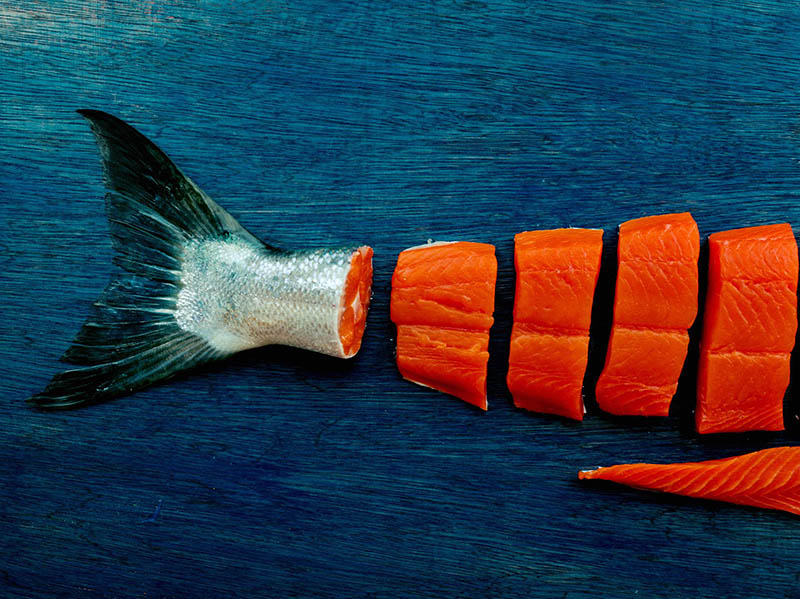China holds big promise to become a top customer for Alaska salmon, and not just for the bright red fillets.
Since 2011 China has been the number one customer for Alaska seafood with purchases nearing $800 million and comprising 54 percent of all Alaska exports to China.
In Chinese food culture, fish symbolizes abundance and prosperity, which plays into a growing middle class that now earns the equivalent of about $25,000 in U.S. dollars a year. That gives buyers significant disposable income to spend on more high-end foods, such as salmon. Add in increasing public concerns about food safety and pollution, and it means Alaska is well poised to send even more salmon to China.
A photo-filled Alaska Sea Grant report – titled "Consumer Preference and Market Potential for Alaska Salmon in China" – gives a glimpse of that potential in a country with 1.4 billion people. Researchers from the University of Alaska/Fairbanks and Purdue spent over three months surveying more than 1,000 urban supermarket shoppers in Beijing, Shanghai and Guangzhou to get their results. Here’s a sampler:
- While nearly 40 percent of Chinese consumers said they eat seafood at least once a week, only about nine percent eat salmon that often, and seven percent have never eaten salmon. The most popular fish consumed by Chinese is carp.
- Over 66 percent considered seafood to be healthier than other foods, and more than 25 percent preferred wild-caught seafood. Nearly the same number did not pay attention to or understand the difference between wild and farmed fish.
- Almost 40 percent of Chinese consumers said they eat salmon in restaurants and prefer it raw, as sashimi or sushi. Nearly 18 percent eat salmon in the same uncooked ways at home.
- On average, consumers ranked the method of harvest as the most important salmon attribute, followed by environmentally friendly certificates, color, the method of preservation, country of origin, and fat content.
- Over 68 percent said they would be more likely to buy Alaska salmon after knowing it comes from a clean environment and is sustainably harvested.
- Nearly 59 percent of Chinese urbanites said they definitely or probably would buy Alaska salmon if it was available at an acceptable price. They also find appealing parts of the fish that most Americans consider toss in the trash.
- Chinese culinary traditions include cooking fish heads, tails, and bones for various soups and stews. Supermarket prices showed salmon heads selling for $4.99 USD per pound, salmon skins at $2.46, and salmon bones at $5.10 per pound. The report said those low-value parts can add significant value to Alaska seafood exports to China.
“The survey responses show that consumers, if presented with more opportunities to purchase Alaska salmon, would favor the wild fish because of its health benefits, pristine source waters and sustainability,” said Quijie “Angie” Zheng, a study co-author along with H. Holly Wang, Quentin Fong, and Yonggang Lu, all professors within Alaska’s university system.
The salmon potential has not been lost on Norway, the world’s top producer of farmed fish. The national fish news site Seafood.com reports that Norway plans to export 343 million pounds of farmed salmon to China by 2025, worth about 4.4 billion yuan, or $646 million.







